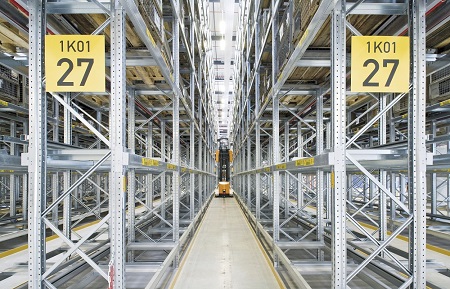Maximizing Warehouse Storage Capacity: Strategies and Techniques
Learn how to increase warehouse storage capacity. In today’s fast-paced business environment, optimizing warehouse space is crucial for maintaining efficiency and competitiveness. With proper planning and implementation of strategic techniques, it’s possible to significantly increase storage capacity without compromising on safety or accessibility. This article delves into a comprehensive guide on how to achieve just that.
1. Effective Space Planning and Layout Design
a. Conduct a Space Audit:
Before making any changes, assess the current storage situation. Identify underutilized spaces and potential areas for improvement.
b. Utilize Vertical Space:
Consider installing taller shelving units or racking systems. Utilize vertical space efficiently by implementing mezzanines or multi-tier racking.
c. Create Aisles Strategically:
Implement narrow aisle configurations and use reach trucks or forklifts designed for tight spaces to maximize floor space.
d. Optimize Dock Areas:
Streamline loading and unloading operations to reduce congestion and create more room for storage.
2. Implement Efficient Racking Systems
a. Select Appropriate Racking Types:
Choose racking systems like selective, drive-in, or pallet flow racks based on the type of goods, frequency of access, and available space.
b. Utilize Push-Back Racking:
This system allows for high-density storage by enabling multiple pallets to be stored and retrieved from the same aisle.
c. Consider Mobile Racking:
Mobile racking units can be moved laterally, allowing access to aisles only when needed, which maximizes space utilization.
3. Opt for Automated Storage Solutions
a. Install AS/RS (Automated Storage and Retrieval Systems):
These systems use robots or cranes to efficiently store and retrieve goods, optimizing vertical space and reducing the need for manual labor.
b. Implement Conveyor Systems:
Use conveyors to streamline the movement of goods within the warehouse, reducing the need for extensive aisle space.
4. Utilize Cubic Storage Techniques
a. Cubicizing Goods:
Cube out items by packaging them in sizes that maximize the available storage space within the racking systems.
b. Overhead Storage Bins:
Install bins or shelves near the ceiling to store lightweight or infrequently accessed items.
5. Optimize Inventory Management
a. Implement ABC Analysis:
Prioritize storage space for high-demand and high-value items while allocating less space to slower-moving goods.
b. Implement Slotting Techniques:
Utilize slotting to group similar products together, reducing the time spent on picking and replenishment.
6. Utilize Temporary or Seasonal Storage Solutions
a. Implement Pallet Stacking:
Utilize empty spaces by stacking pallets securely, particularly for seasonal or infrequently accessed items.
b. Implement External Storage:
If feasible, consider using temporary external storage solutions for overflow during peak seasons.
7. Upgrade Warehouse Management Software (WMS)
a. Implement Real-Time Inventory Tracking:
Use advanced WMS to monitor stock levels and movements, allowing for accurate demand forecasting and efficient space allocation.
b. Optimize Order Fulfillment Process:
Use WMS features to optimize order picking routes, reducing unnecessary travel time and maximizing space efficiency.
By implementing these strategies, businesses can significantly increase their warehouse storage capacity. Remember, a well-organized and efficiently managed warehouse not only maximizes space but also improves overall operational efficiency, ultimately leading to a more competitive and profitable business.



Comments are closed